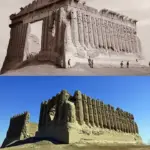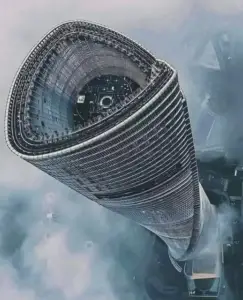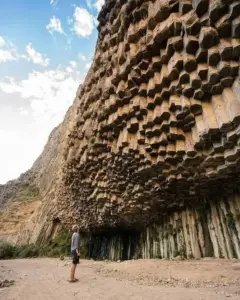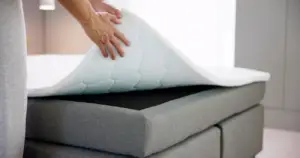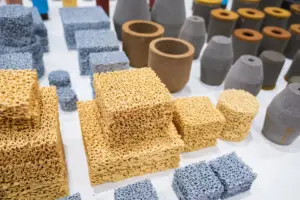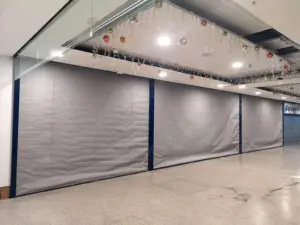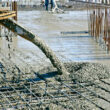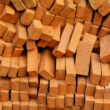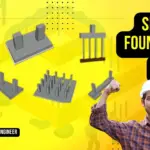Stairs are a fundamental architectural element that can vary significantly in design, structure, and purpose. One unique and fascinating type is Witches’ Stairs.

Witches’ Stairs
Witches’ Stairs are a peculiar and historically significant design, characterized by their staggered or uneven steps. This arrangement alternates tread heights or widths in a pattern that appears irregular to the untrained eye.
- Purpose: Folklore suggests that Witches’ Stairs were designed to confuse or trap witches. The belief was that witches, due to their supernatural nature, could not navigate the staggered pattern with ease.
- Aesthetic Appeal: Beyond the legend, these stairs present an intriguing visual element, blending tradition with a touch of mystique.
- Practicality: Some interpretations of this design aim to save space, particularly in narrow or compact structures.
While Witches’ Stairs are rare in modern architecture, they remain a topic of interest for those exploring historical designs and their connections to cultural beliefs.
Stairs are an integral element of any multi-level home, providing not only functionality but also serving as a key design feature. Whether you prefer minimalist modern designs or traditional styles, the right staircase can elevate the aesthetics and practicality of your space. This guide explores a variety of stair designs, including the unique and folklore-inspired Witches’ Stairs, along with other popular styles in house construction.
1. Straight Stairs
Straight stairs are the most basic and commonly used design in homes.
- Design: A linear configuration that connects two levels without any turns or landings.
- Advantages:
- Simple and cost-effective to construct.
- Easy to use and navigate.
- Works well in open spaces with no layout restrictions.
- Applications: Straight stairs are ideal for homes with ample floor area and are often seen in minimalist or modern interiors.
2. L-Shaped Stairs
An L-shaped staircase is a practical variation of straight stairs, featuring a 90-degree turn at some point.
- Design: Two straight flights connected by a landing or an intermediate platform, forming an “L” shape.
- Advantages:
- More visually appealing than straight stairs.
- Occupies less space in comparison to straight stairs.
- Provides a natural break, making it safer for children and the elderly.
- Applications: Frequently used in corner spaces or where design aesthetics are a priority.
3. U-Shaped Stairs (Half-Turn Stairs)
These stairs combine two flights of straight steps with a 180-degree turn, creating a “U” shape.
- Design: The turn is achieved via a landing between the two flights.
- Advantages:
- Compact and space-saving.
- Adds architectural interest to a home.
- Provides a resting point, enhancing safety and usability.
- Applications: Ideal for multi-story homes or spaces where straight stairs are impractical.
4. Spiral Stairs
Spiral stairs are a visually striking design often used in compact spaces.
- Design: Steps spiral around a central vertical pole, creating a helical pattern.
- Advantages:
- Extremely space-efficient.
- Adds an element of drama and sophistication.
- Suitable for secondary staircases or loft access.
- Applications: Perfect for small apartments, studios, or as a decorative focal point.
5. Circular Stairs
Circular stairs resemble spiral stairs but with a more graceful curve and no central pole.
Like Us on Facebook!
- Design: Steps are arranged in a smooth, circular fashion, radiating outward from the center.
- Advantages:
- Elegant and luxurious in appearance.
- More comfortable to use than spiral stairs.
- Applications: Often found in grand foyers, luxury homes, or as part of an elaborate architectural design.
6. Floating Stairs
Floating stairs are a modern and minimalist option that gives the illusion of steps suspended in mid-air.
Subscribe Us on YouTube!
- Design: Steps are attached to a wall or supported by hidden fixtures, leaving the space beneath open.
- Advantages:
- Sleek and contemporary design.
- Enhances the feeling of open space in a room.
- Can be paired with glass railings for added sophistication.
- Applications: Common in contemporary or high-end residential designs.
7. Witches’ Stairs
Witches’ Stairs are a unique design with historical and folkloric significance.
- Design: Steps are staggered in a zigzag pattern, with uneven heights or widths.
- Advantages:
- Steeped in folklore, believed to confuse witches who supposedly cannot navigate the irregular pattern.
- Adds an intriguing and mystical touch to a home.
- Space-saving in certain layouts.
- Applications: Rarely used today, but they remain a fascinating choice for those interested in unconventional designs or historical architecture.
8. Bifurcated Stairs
Bifurcated stairs are grand and luxurious, often associated with palatial homes and formal buildings.
- Design: A single staircase splits into two separate flights that lead in opposite directions.
- Advantages:
- Makes a bold architectural statement.
- Offers functionality with separate paths for ascending and descending.
- Applications: Common in mansions, hotels, or buildings with expansive entrances.
9. Ladder Stairs
Ladder stairs are the simplest and most compact type of staircase.
- Design: Resembles a ladder, with steep and narrow steps.
- Advantages:
- Extremely space-efficient and easy to construct.
- Ideal for areas with very limited space.
- Applications: Used for lofts, attics, or as temporary access points.
10. Cantilever Stairs
Cantilever stairs combine innovation and aesthetics, making them a favorite in modern architecture.
- Design: Each step is anchored at one end, giving the appearance of floating steps without visible support.
- Advantages:
- Visually striking and elegant.
- Allows for open and uncluttered floor spaces.
- Applications: Suitable for high-end homes or commercial spaces looking to make an artistic statement.
Choosing the Right Staircase for Your Home
When selecting a staircase, it’s essential to balance aesthetics, practicality, and budget.
- Space Considerations: Spiral, ladder, or U-shaped stairs are excellent for compact areas.
- Safety: Designs with landings, such as U-shaped or L-shaped stairs, are safer for families with children or elderly members.
- Style Preference: Floating or cantilever stairs work well in contemporary homes, while bifurcated stairs make a dramatic statement in luxurious spaces.
- Budget: Straight stairs are the most cost-effective option, while custom designs like circular or cantilever stairs may require a higher budget.
Staircases are more than just functional elements—they define the character of a home. Whether you opt for the sleek lines of floating stairs or the historical charm of Witches’ Stairs, choosing the right design will enhance both the form and function of your living space.

